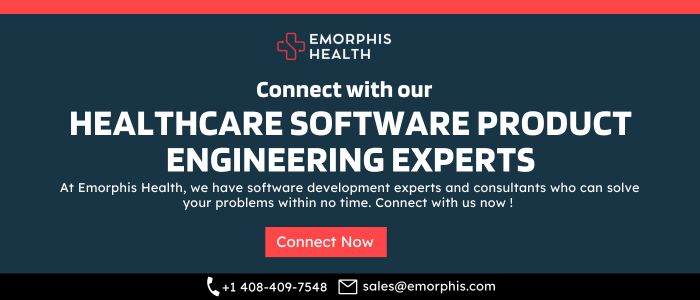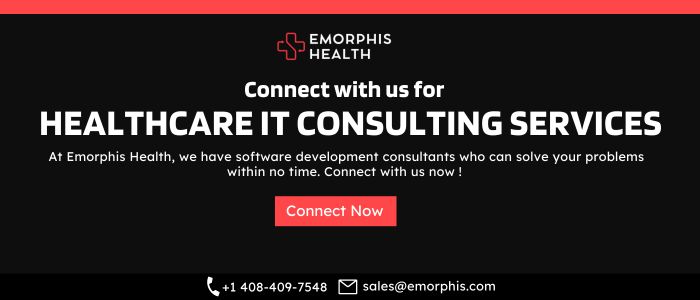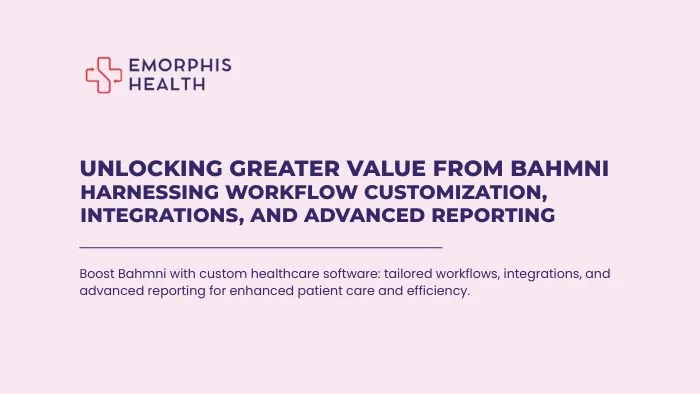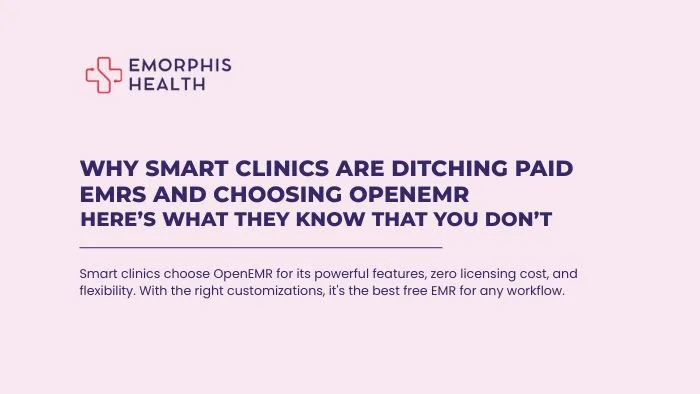Introduction
See Contents
- 1 Introduction
- 2 Understanding the Healthcare Industry
- 3 Current Challenges in the Healthcare Industry
- 4 The Need for Digital Transformation
- 5 Emerging Trends in Healthcare Technology
- 6 Key Features and Functionality of Healthcare Apps
- 7 Compliance and Security Considerations in Healthcare App Development
- 8 Technology Stack for Healthcare App Development
- 9 Process of Healthcare App Development
- 10 User Experience (UX) Design for Healthcare Apps
- 11 Monetization and Business Models for Healthcare Apps
- 12 Future Trends in Healthcare App Development
- 13 What is the cost of healthcare application development?
- 14 Conclusion
In today’s digital era, healthcare software product engineering, and healthcare app development has emerged as a crucial element in transforming the healthcare industry. With the rise of smartphones and mobile technology, healthcare apps have the potential to revolutionize patient care. Also, improve accessibility, and enhance the overall efficiency of healthcare systems. This comprehensive guide aims to provide insights into the various aspects of healthcare app development. As a matter of fact, right from understanding the industry to implementing key features and ensuring compliance and security. Also selecting the right technology stack, designing a seamless user experience, following an effective development process, and exploring monetization.
Let’s check the details.
Understanding the Healthcare Industry
The healthcare industry plays a critical role in the well-being of individuals and communities. It encompasses a vast network of healthcare providers, hospitals, clinics, pharmaceutical companies, and various other stakeholders. However, the industry faces numerous challenges such as limited access to care, rising healthcare costs, inefficient processes, and fragmented systems. In this section, we will explore the current state of the healthcare industry. Also, discuss the need for digital transformation to overcome these challenges.
Current Challenges in the Healthcare Industry
- Limited Access to Care: Many individuals, especially those in remote areas or with mobility issues, face challenges in accessing timely healthcare services. This lack of accessibility can lead to delayed diagnoses, compromised treatments, and overall health disparities.
- Rising Healthcare Costs: The cost of healthcare has been steadily increasing, making it difficult for individuals to afford necessary treatments and medications. High healthcare costs also strain healthcare systems and limit access for vulnerable populations.
- Inefficient Processes: Manual and paper-based processes in healthcare result in inefficiencies, errors, and delays in delivering care. The industry needs streamlined processes to enhance patient outcomes and optimize resource utilization.
- Fragmented Systems: Healthcare systems often lack interoperability, leading to fragmented patient information and communication gaps between healthcare providers. This fragmentation hampers the delivery of seamless, coordinated care.
The Need for Digital Transformation
- Enhanced Efficiency and Productivity: Embracing digital technologies allows healthcare organizations to streamline processes, automate administrative tasks, and improve operational efficiency. Digital solutions can reduce paperwork, optimize workflows, and enable healthcare providers to focus more on patient care.
- Improved Access to Care: Digital transformation enables telemedicine and remote patient monitoring, breaking down geographical barriers and expanding access to healthcare services. Patients can consult with healthcare professionals from the comfort of their homes, reducing travel time and costs.
- Better Data Management and Analytics: Digital systems facilitate the collection, storage, and analysis of vast amounts of healthcare data. With advanced analytics, healthcare organizations can gain valuable insights. Also, identify patterns, and make data-driven decisions for improved patient outcomes and population health management.
- Seamless Interoperability: By adopting standardized electronic health records (EHRs) and interoperability frameworks. Healthcare providers can securely share patient information across different systems, ensuring seamless care transitions. This improves care coordination, reduces medical errors, and enhances patient safety.
Emerging Trends in Healthcare Technology
- Artificial Intelligence (AI) and Machine Learning: AI and machine learning algorithms can analyze large datasets, and assist in diagnostics. Also, predict disease patterns, and support personalized treatment plans. These technologies have the potential to revolutionize clinical decision-making and enhance patient outcomes.
- Internet of Things (IoT) in Healthcare: IoT devices and sensors can monitor patients remotely, collect real-time health data, and enable early detection of health issues. IoT applications can also improve medication adherence, track vital signs, and provide continuous care outside traditional healthcare settings.
- Blockchain in Healthcare: Blockchain technology offers secure, transparent, and tamper-proof storage of healthcare data. It can improve data privacy, enable secure sharing of health records, and facilitate consent-based access by patients, leading to better control over their health information.
Understanding the challenges faced by the healthcare industry and embracing digital transformation are essential steps toward improving patient care, increasing accessibility, and optimizing healthcare systems. By leveraging digital technologies, healthcare organizations can enhance efficiency, improve access to care, and enable seamless interoperability. It is crucial for healthcare stakeholders to collaborate, innovate, and invest in transformative solutions to shape the future of healthcare positively. Let us now check the key features of healthcare apps.
Look at some of the Digital Health Innovations
Key Features and Functionality of Healthcare Apps
Healthcare apps have become integral in revolutionizing the way patients and healthcare providers interact. These apps offer a wide range of features and functionalities that enhance patient care, improve accessibility, and streamline healthcare delivery. In this section, we will explore the key features and functionalities that make healthcare apps essential tools in the digital age.
1. Appointment Scheduling and Reminders
One of the primary features of healthcare apps is the ability to schedule appointments with healthcare providers. Patients can easily view the availability of doctors, select a convenient time slot, and book appointments seamlessly. Additionally, apps can send automated reminders to patients, reducing the likelihood of missed appointments and improving patient adherence to treatment plans.
2. Electronic Health Record (EHR) Integration
Healthcare apps can integrate with electronic health records (EHR) systems, allowing patients to access their medical history, test results, and prescription information. This integration ensures that patients and healthcare providers have up-to-date and comprehensive information readily available, improving the accuracy and efficiency of diagnoses and treatments.
3. Telemedicine and Virtual Consultations
Telemedicine app development solutions have gained significant popularity, especially in recent times. Healthcare apps enable virtual consultations, allowing patients to connect with healthcare professionals remotely. Through secure video conferencing or messaging platforms, patients can discuss their symptoms, receive medical advice, and even get prescriptions without the need for in-person visits. Telemedicine increases access to healthcare, particularly for individuals in remote areas or those with limited mobility.
4. Medication Management and Reminders
Medication adherence is crucial for successful treatment outcomes. Healthcare apps provide features to manage medication schedules, set reminders for taking medications, and track adherence. Some apps also offer medication interaction checks and provide information about drug side effects, ensuring patient safety and empowering individuals to take control of their healthcare.
5. Health and Wellness Tracking
Healthcare apps often incorporate features for tracking various health and wellness parameters. These can include monitoring physical activity, sleep patterns, heart rate, blood pressure, blood glucose levels, and more. Tracking such data helps individuals monitor their overall health, identify trends, set goals, and make informed decisions about their lifestyle choices.
6. Emergency Services and Notifications
Healthcare apps can integrate emergency service features, such as providing access to emergency contact numbers, GPS-based location services, and real-time notifications during emergencies. These features enable quick access to help during critical situations and ensure timely intervention when needed.
7. Secure Messaging and Communication
Secure messaging and communication functionalities within healthcare apps allow patients to communicate with healthcare providers, ask questions, seek clarifications, and receive timely responses. These features facilitate ongoing patient-provider communication, enhance patient engagement, and improve the overall patient experience.
The key features and functionalities of healthcare apps empower patients by providing convenient access to healthcare services, enhancing communication with healthcare providers, and enabling better management of their health and wellness. These apps streamline healthcare delivery, improve patient adherence to treatment plans, and contribute to better health outcomes. As healthcare continues to evolve, healthcare app compliances will play an increasingly vital role in transforming patient care and promoting overall well-being.
Compliance and Security Considerations in Healthcare App Development
Healthcare apps handle sensitive patient data, making compliance and security paramount during development. Protecting patient information and ensuring regulatory compliance, such as adhering to the Health Insurance Portability and Accountability Act (HIPAA) in the United States, are crucial for maintaining patient trust and safeguarding their privacy. In this section, we will explore the key compliance and security considerations in healthcare app development.
1. HIPAA Compliance
HIPAA regulations establish the guidelines for safeguarding sensitive patient health information, and it is crucial for healthcare apps to comply with these regulations. Compliance with HIPAA ensures the security and privacy of patient data, requiring the implementation of necessary measures to protect the confidentiality, integrity, and availability of electronic protected health information (ePHI). Developers need to ensure proper encryption, access controls, audit trails, and risk assessments to meet HIPAA requirements.
2. Data Privacy and Protection
Healthcare apps handle sensitive personal and medical information, making data privacy and protection of utmost importance. App developers must implement strong data privacy policies, obtain informed consent from patients, and ensure that data is collected, stored, and transmitted securely. This involves employing encryption techniques, anonymizing data when possible, and restricting access to authorized personnel only.
3. Secure Authentication and Access Control
Robust authentication and access control mechanisms are essential to prevent unauthorized access to patient data. Healthcare apps should implement secure login procedures, such as multi-factor authentication, to verify the identity of users. Role-based access control should be enforced, allowing users to access only the information necessary for their roles, thereby minimizing the risk of data breaches.
4. Encryption and Secure Transmission of Data
Healthcare apps should encrypt patient data both at rest (stored on servers or devices) and in transit (during data transmission). Encryption algorithms, such as Transport Layer Security (TLS), should be used to secure data transfers between the app and the server. Secure transmission protocols ensure that data remains protected even if intercepted during transit.
5. Regular Security Audits and Penetration Testing
Conducting regular security audits and penetration testing is crucial to identify vulnerabilities and potential security breaches. These tests help assess the robustness of the app’s security measures and ensure that any vulnerabilities are promptly addressed. Third-party security experts can be engaged to perform thorough assessments and provide recommendations for improving app security.
6. Compliance with Other Applicable Regulations
Depending on the geographical location and target audience, healthcare apps may need to comply with additional regulations, such as the General Data Protection Regulation (GDPR) in the European Union. App developers should be aware of and adhere to the specific regulations applicable to their target markets to ensure the legal and ethical handling of patient data.
7. Ongoing Monitoring and Incident Response
Healthcare apps should implement mechanisms for continuous monitoring of security controls and potential threats. Incident response plans should be in place to promptly address any security incidents or data breaches. By monitoring and responding to security events proactively, healthcare apps can minimize the impact of security breaches and protect patient data.
Compliance and security considerations are critical elements of healthcare app development. Adhering to regulatory requirements, such as HIPAA, and implementing robust security measures ensure the privacy and protection of patient data. By prioritizing compliance and security, healthcare app technology considerations can help healthcare providers, and development, fostering a secure and reliable environment for delivering digital healthcare services.
Here is the complete detail on Healthcare Compliance
Technology Stack for Healthcare App Development
Selecting the right technology stack is essential for developing robust and scalable healthcare apps. The technology stack comprises the combination of programming languages, frameworks, libraries, databases, and other tools that form the foundation of the application. In this section, we will explore the key components of a technology stack for healthcare app development.
1. Mobile App Development Frameworks and Platforms
a. Native Development
Native frameworks like Swift for iOS and Kotlin/Java for Android provide high-performance and native user experience. They allow direct access to device features and ensure seamless integration with the operating system. Different platforms require separate development processes.
b. Cross-platform Development
Frameworks like React Native and Flutter enable building apps that work across multiple platforms, reducing development time and effort. These frameworks use a single codebase and provide near-native performance.
2. Backend Development Technologies
a. Programming Languages
Backend development can be done using languages like Python, Java, Ruby, or Node.js. The choice depends on the development team’s expertise and the specific requirements of the app.
b. Web Frameworks
Frameworks like Django (Python), Spring (Java), Ruby on Rails (Ruby), or Express.js (Node.js) provide a structured approach to backend development, offering features like routing, database integration, and security.
3. Database Management Systems for Healthcare Apps
a. Relational Databases
Relational database management systems (RDBMS) like MySQL, PostgreSQL, or Oracle are commonly used for healthcare apps. They offer structured data storage, support complex queries, and ensure data consistency.
b. NoSQL Databases
NoSQL databases like MongoDB or Cassandra provide scalability, flexibility, and fast data retrieval. They are suitable for scenarios where flexibility and scalability are essential, such as handling large volumes of unstructured data.
4. Integration of Third-Party APIs and Services
Healthcare apps often require integration with external services and APIs to enhance functionality. This can include integrating with healthcare systems, EHRs, payment gateways, and messaging services. APIs like FHIR (Fast Healthcare Interoperability Resources) facilitate seamless integration with healthcare standards and systems.
5. Cloud Services and Infrastructure
Leveraging cloud services, such as Amazon Web Services (AWS), Microsoft Azure, or Google Cloud Platform, provides scalability, reliability, and cost-efficiency for healthcare apps. Cloud infrastructure ensures high availability, data storage, and security while handling fluctuations in user traffic.
6. Security and Compliance Tools
Healthcare apps require robust security and compliance measures. Tools like OWASP (Open Web Application Security Project) for security testing, vulnerability scanners, encryption libraries, and authentication frameworks can be incorporated into the technology stack to ensure data security and compliance with regulations such as HIPAA.
7. Development and Testing Tools
Integrated development environments (IDEs) like Xcode (iOS) and Android Studio (Android) provide powerful tools for app development. Testing frameworks, such as XCTest for iOS and Espresso for Android, help ensure the quality and stability of the app.
The technology stack forms the backbone of healthcare app development, influencing the app’s performance, scalability, security, and interoperability. By carefully selecting the right combination of mobile app development frameworks, backend technologies, databases, and integration tools, healthcare apps can be built to meet the specific needs of patients, healthcare providers, and regulatory compliance. A well-chosen technology stack sets the foundation for developing robust, scalable, and secure healthcare apps that enhance patient care and improve healthcare delivery.
Process of Healthcare App Development
Developing healthcare apps requires a structured and systematic approach to ensure quality, compliance with regulations, and a seamless user experience. The development process for healthcare apps involves various stages, from initial planning and design to testing and deployment. In this section, we will explore the key stages of the development process for healthcare apps.
1. Requirement Gathering and Analysis
The first step is to gather and analyze the requirements for the healthcare app. This involves understanding the target audience, their needs, and the specific features and functionalities required. Collaboration with healthcare professionals and stakeholders helps in identifying critical requirements and setting clear project objectives.
2. Design and Prototyping
Once the requirements are defined, the next step is to create the app’s design and prototype. User experience (UX) and user interface (UI) design play a vital role in healthcare apps to ensure ease of use, intuitive navigation, and a visually appealing interface. Design prototypes help validate the app’s usability and gather feedback from users and stakeholders.
3. Backend and Frontend Development
The development process involves implementing the backend and frontend components of the healthcare app. Backend development includes building the server-side infrastructure, integrating databases, implementing APIs, and ensuring data security. Frontend development focuses on creating the user interface, implementing interactive features, and integrating with the backend systems.
4. Integration with Healthcare Systems and APIs
Healthcare apps often need to integrate with existing healthcare systems, electronic health records (EHRs), or third-party APIs to access and exchange patient data securely. This stage involves implementing interoperability standards, such as HL7 or FHIR, and ensuring seamless integration with healthcare systems to enable data exchange and improve care coordination.
5. Testing and Quality Assurance
Thorough testing is crucial to ensure the reliability, functionality, and security of healthcare apps. Various types of testing, including functional testing, performance testing, security testing, and usability testing, should be conducted. Compliance with regulations, such as HIPAA, must be verified through security audits and penetration testing.
6. Compliance and Regulatory Considerations
Healthcare apps must comply with applicable regulations, such as HIPAA or GDPR, to ensure the privacy and security of patient data. This stage involves reviewing the app’s compliance with regulatory requirements, implementing necessary safeguards and security measures, and documenting compliance efforts.
7. User Acceptance Testing and Feedback
User acceptance testing (UAT) involves engaging real users to test the app in a real-world scenario and gather feedback on usability, performance, and overall satisfaction. The user feedback helps in identifying areas for improvement, refining the app’s features, and enhancing the user experience.
8. Deployment and Maintenance
After successful testing and user acceptance, the healthcare app is ready for deployment. This stage involves deploying the app to the intended platforms, such as app stores or enterprise distribution channels. Ongoing maintenance and support are necessary to address user feedback, fix bugs, and ensure the app remains updated and compatible with evolving technologies and operating systems.
The development process for healthcare apps requires a systematic approach to ensure quality, compliance, and also a seamless user experience. By following a structured process that includes requirements gathering, design and prototyping, backend and frontend development, integration with healthcare systems, thorough testing, compliance considerations, user acceptance testing, and also ongoing maintenance, healthcare apps can be built to meet the specific needs of patients, healthcare providers, and regulatory requirements. A well-executed development process ensures the delivery of high-quality, secure, and user-friendly healthcare apps that contribute to improved patient care and healthcare delivery.
User Experience (UX) Design for Healthcare Apps
User experience (UX) design plays a crucial role in healthcare apps, as it directly impacts how users interact with the app and their overall satisfaction. In the context of healthcare apps, a well-designed UX is essential for ensuring ease of use, accessibility, and effective communication of medical information. UX designers focus on creating intuitive interfaces, streamlined navigation, and clear visual hierarchy to guide users through the app seamlessly. They consider factors such as font size and contrast for readability, color choices for visual appeal and to convey meaning and intuitive interactions for tasks like appointment scheduling or accessing medical records. UX design also emphasizes the importance of providing relevant and timely information to users, such as personalized health recommendations or medication reminders. By prioritizing user needs and preferences, healthcare apps with exceptional UX design can enhance patient engagement, adherence to treatment plans, and overall satisfaction with the app’s functionality.
Monetization and Business Models for Healthcare Apps
When it comes to healthcare apps, monetization, and business models play a significant role in sustaining app development and generating revenue. Several monetization strategies are employed in healthcare app development. One common approach is offering the app as a paid download, where users pay a one-time fee to access the app’s features and functionalities. Another approach is utilizing in-app purchases, where users can make additional purchases within the app, such as unlocking advanced features or subscribing to premium content. Subscription-based models are also prevalent, where users pay a recurring fee to access the app’s services or receive additional benefits. Some healthcare apps generate revenue through partnerships and collaborations with healthcare providers or pharmaceutical companies, offering sponsored content or targeted advertisements within the app.
Additionally, data monetization is a growing trend, where anonymized and aggregated user data can be leveraged for research purposes or sold to relevant stakeholders while ensuring user privacy. Selecting the right monetization strategy depends on factors such as the app’s target audience, the value it provides, and the competitive landscape in the healthcare industry. By implementing effective monetization models, healthcare apps can generate revenue, support ongoing development and maintenance, and continue delivering valuable services to users.
Future Trends in Healthcare App Development
The field of healthcare app development is continually evolving, driven by technological advancements and changing user needs. Several future trends are expected to shape the landscape of healthcare app development:
A. AI/ML
Artificial Intelligence (AI) and Machine Learning (ML) technologies offer significant potential in healthcare app development. These advanced technologies enable intelligent data analysis, personalized treatment recommendations, early disease detection through predictive analytics, and the integration of virtual assistants for enhanced patient engagement and support.
B. Internet of Medical Things (IoMT)
IoMT involves the integration of medical devices and wearables with healthcare apps, allowing real-time monitoring of vital signs, medication adherence, and remote patient monitoring. IoMT-enabled apps can provide valuable insights to healthcare professionals and facilitate proactive care.
C. Telehealth and Remote Patient Monitoring
The COVID-19 pandemic accelerated the adoption of telehealth app development and remote patient monitoring solutions. These trends are likely to continue, with healthcare apps facilitating virtual consultations, remote monitoring of chronic conditions, and providing access to healthcare services from the comfort of home.
D. Blockchain for Data Security
Blockchain technology has the potential to enhance data security and privacy in healthcare apps. By providing a decentralized and immutable ledger, blockchain can ensure secure storage and exchange of sensitive patient data, improving trust and compliance with data protection regulations.
E. Integration with Wearable Devices and Health Trackers
Healthcare apps can integrate with a wide range of wearable devices and health trackers, enabling seamless data syncing and empowering users to track their health and wellness parameters easily.
F. Personalized Healthcare Experiences
Future healthcare apps are likely to focus on delivering personalized experiences based on individual health data, preferences, and treatment plans. Customized content, tailored recommendations, and personalized interventions can improve patient outcomes and engagement.
By embracing these future trends, healthcare app developers can create innovative and transformative solutions that enhance patient care, promote wellness, and revolutionize the healthcare industry.
What is the cost of healthcare application development?
The cost of developing healthcare applications can vary significantly based on several factors, including the complexity of the app, the desired features and functionalities, the technology stack used, the development team’s location, and the development timeline. Here are some key factors that influence the cost of healthcare app development.
a) App Complexity and Features
The complexity of the healthcare app and the number of features it offers directly impact the development cost. Apps with advanced functionalities, such as integration with medical devices, data analytics, telemedicine capabilities, or artificial intelligence algorithms, require more development effort and expertise, leading to higher costs.
b) Design and User Experience
Investing in a well-designed user interface (UI) and user experience (UX) is crucial for healthcare apps. Designing an intuitive and visually appealing interface requires expertise and careful attention to detail, which can contribute to the overall development cost.
c) Backend Development and Integration
The integration of healthcare systems, electronic health records (EHRs), or third-party APIs adds complexity to the development process. Building a robust backend infrastructure, ensuring data security and privacy, and implementing seamless integration with external systems can increase the development cost.
d) Technology Stack and Development Team
The choice of the technology stack, including programming languages, frameworks, and development tools, can influence the cost. The availability and expertise of the development team, along with their location, can also impact the overall cost. Hiring experienced developers or outsourcing the development to a specialized agency may have different cost implications.
e) Testing and Quality Assurance
Thorough testing and quality assurance processes are crucial for healthcare apps to ensure reliability, security, and compliance. Allocating resources and time for extensive testing, including functional testing, performance testing, security testing, and compliance testing, can add to the development cost.
f) Regulatory Compliance
Healthcare apps must comply with various regulations, such as HIPAA, GDPR, or FDA guidelines, depending on the target market and the app’s functionality. Ensuring compliance with these regulations may require additional resources, expertise, and documentation, leading to increased development costs.
It’s important to note that estimating the exact cost of healthcare app development is challenging without a detailed analysis of specific requirements. The development cost can vary widely, ranging from tens of thousands to hundreds of thousands of dollars or more, depending on the complexity and scope of the app. Working with a professional development team and conducting thorough planning and scoping exercises can help in obtaining accurate cost estimates for healthcare app development.
Conclusion
In conclusion, developing a healthcare app requires a thorough understanding of the industry, adherence to compliance and security considerations, the implementation of key features and functionalities, and a focus on user experience design. Choosing the right technology stack and considering future trends can also contribute to the success of the app. By following this comprehensive guide, healthcare app developers can create impactful healthcare apps that improve patient care and transform the healthcare industry.
Get in touch with a Healthcare software product engineering company











